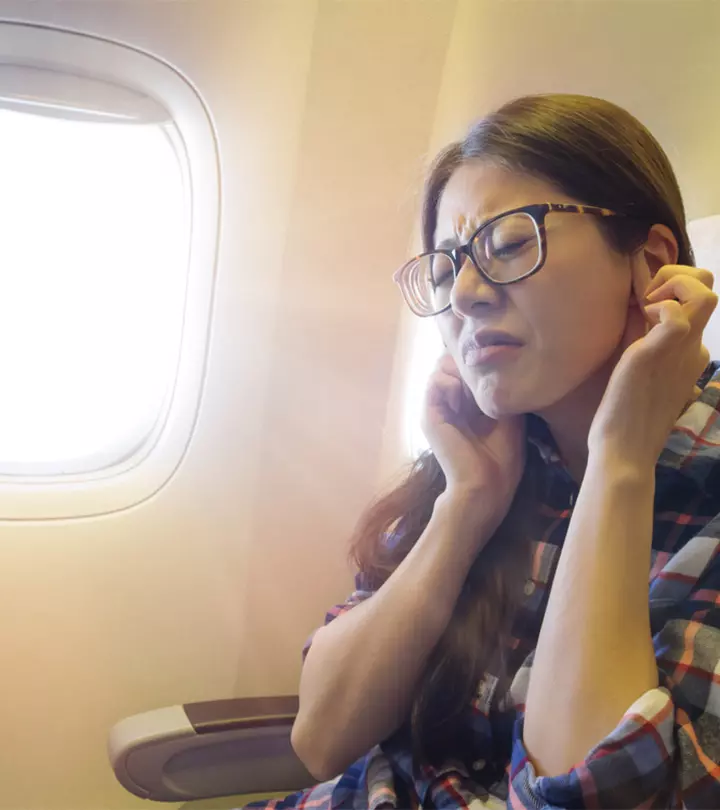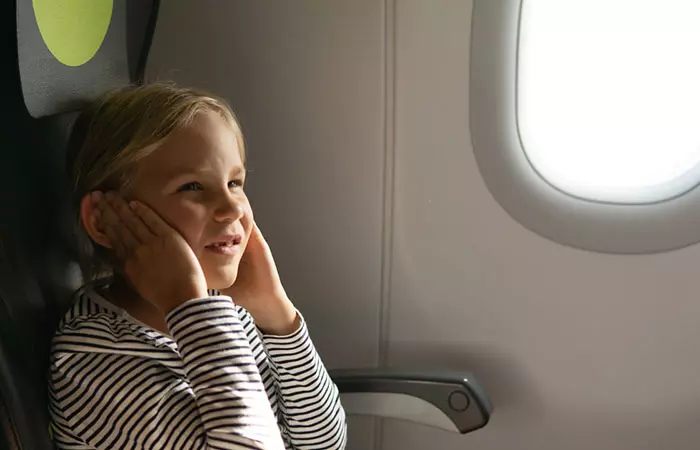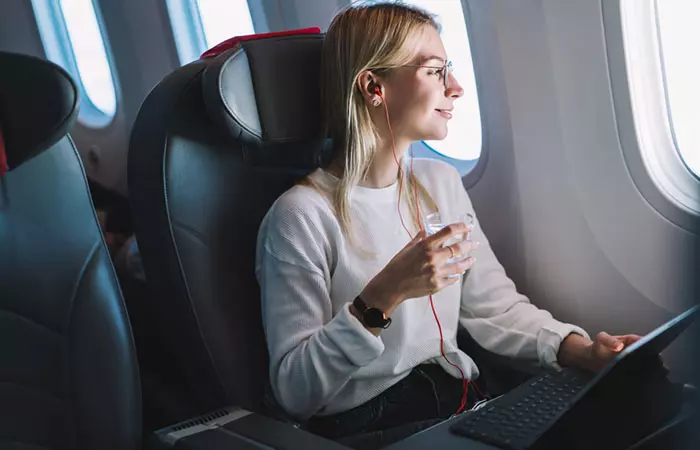How To Avoid Ear Pain During A Flight

Image: Shutterstock
Air travel is mostly a thrilling experience for most of us. It saves travel time and pampers you with comfort and food. However flying does bring its fair share of challenges to the table, one of the most common being ear pain during takeoff, landing, or changes in altitude. The sensation of blocked ears can turn a pleasant journey into the worst flying experience. Fortunately, there are some simple things you can do to alleviate or even prevent ear pain. In this article, we will explore the causes of ear pain during flights, the science behind it, and, most importantly, some proven tips to help you make sure that your next flight is not only comfortable but also earache-free. Read on!
In This Article
1. Engage The Muscles In Your Mouth
Engaging the muscles of your mouth is a helpful technique to avoid ear pain during a flight. Ear pain often occurs due to changes in air pressure, especially during takeoff and landing. Chewing gum, swallowing, or even sucking on a piece of candy involve the movement of the jaw and the muscles in the mouth, which can help to equalize the pressure in the ears. These actions stimulate the Eustachian tubes, allowing air to flow in and out and thus preventing the discomfort associated with air pressure changes (1). So, whether it’s a stick of gum or a simple sip of water, engaging the muscles of your mouth can be an effective way to ensure a more comfortable and pain-free flight experience.
2. Sleep During The Flight
Ear pain during air travel often occurs due to changes in air pressure, especially during takeoff and landing. To mitigate this discomfort, it’s advisable to engage in certain strategies, such as swallowing, chewing gum, or yawning, which help equalize the pressure in your ears. Staying awake can be tiring, and it might make you less inclined to perform these pressure-equalizing actions subconsciously.
Additionally, sleep deprivation can lead to a weakened immune system and may make you more susceptible to ear infections, further increasing the risk of ear pain during or after the flight.
3. Drink A Lot Of Fluids
Drinking plenty of fluids can help to prevent ear pain during a flight. Staying well-hydrated helps keep the mucous membranes in the throat and Eustachian tubes moist, which in turn assists in the equalization of pressure in the ears. Opt for water or non-alcoholic beverages as alcohol and caffeine can lead to dehydration.
4. Try The Valsalva Maneuver
The Valsalva maneuver is a valuable technique for those looking to prevent ear pain during a flight. This method involves gently closing your mouth, pinching your nose shut, and then attempting to exhale while keeping your nostrils sealed. It effectively regulates the air pressure inside your ears, counteracting the rapid changes experienced during takeoff and landing.
By performing the Valsalva maneuver, you can help equalize the pressure in your middle ear and the surrounding environment, reducing the chances of experiencing discomfort, pain, or even hearing loss during air travel.
5. Use Earplugs
Utilizing earplugs is a smart and simple method to mitigate ear pain during a flight. Earplugs work by partially blocking external sounds, which can help reduce the impact of these pressure shifts on the delicate structures of the inner ear. Furthermore, they create a barrier that minimizes the sudden pressure changes in the ear canal, making the experience of air travel more comfortable.
6. Do Breathing Exercises
Engaging in a breathing exercise is a valuable method for preventing ear pain during a flight. Ear discomfort often stems from sudden changes in air pressure during takeoff and landing, and controlled breathing can help alleviate this issue. Techniques such as deep diaphragmatic breathing or the equalizing breath, which involves inhaling through your nose and exhaling through pinched nostrils while keeping your mouth closed, can facilitate the equalization of ear pressure (2).
So, now you know that avoiding ear pain during a flight is relatively simple with the right strategies at your disposal. The key is to be proactive and find the approach that works best for you. By adopting these easy practices, you can ensure a more pleasant and pain-free flying experience. This will help you arrive at your destination feeling refreshed and ready to enjoy your journey to the fullest. So, whether you’re a seasoned traveler or a first-time flier, incorporating these tips into your pre-flight routine can make a world of difference in your in-flight comfort and overall travel satisfaction. Make sure you share these strategies with your near and dear ones to make their travel experience flawless. Happy flying!

























